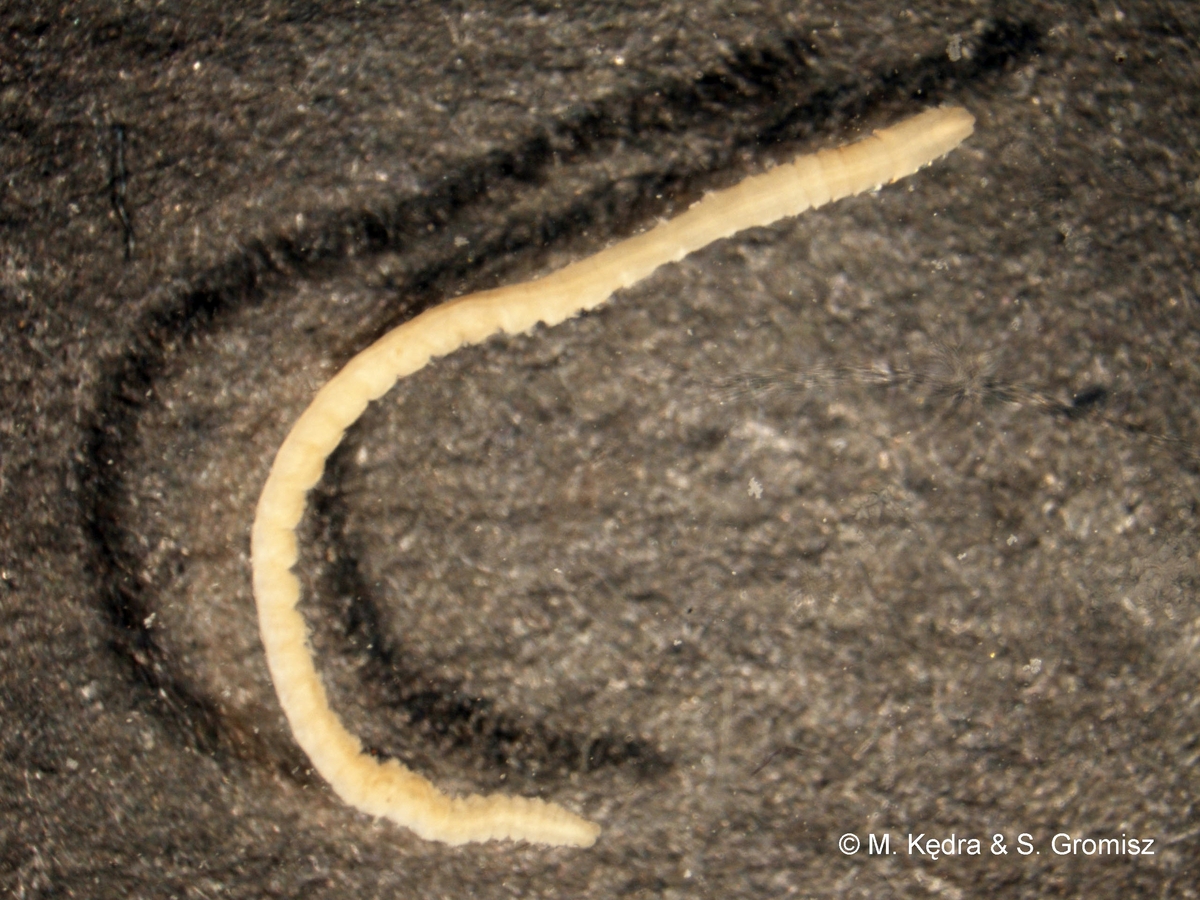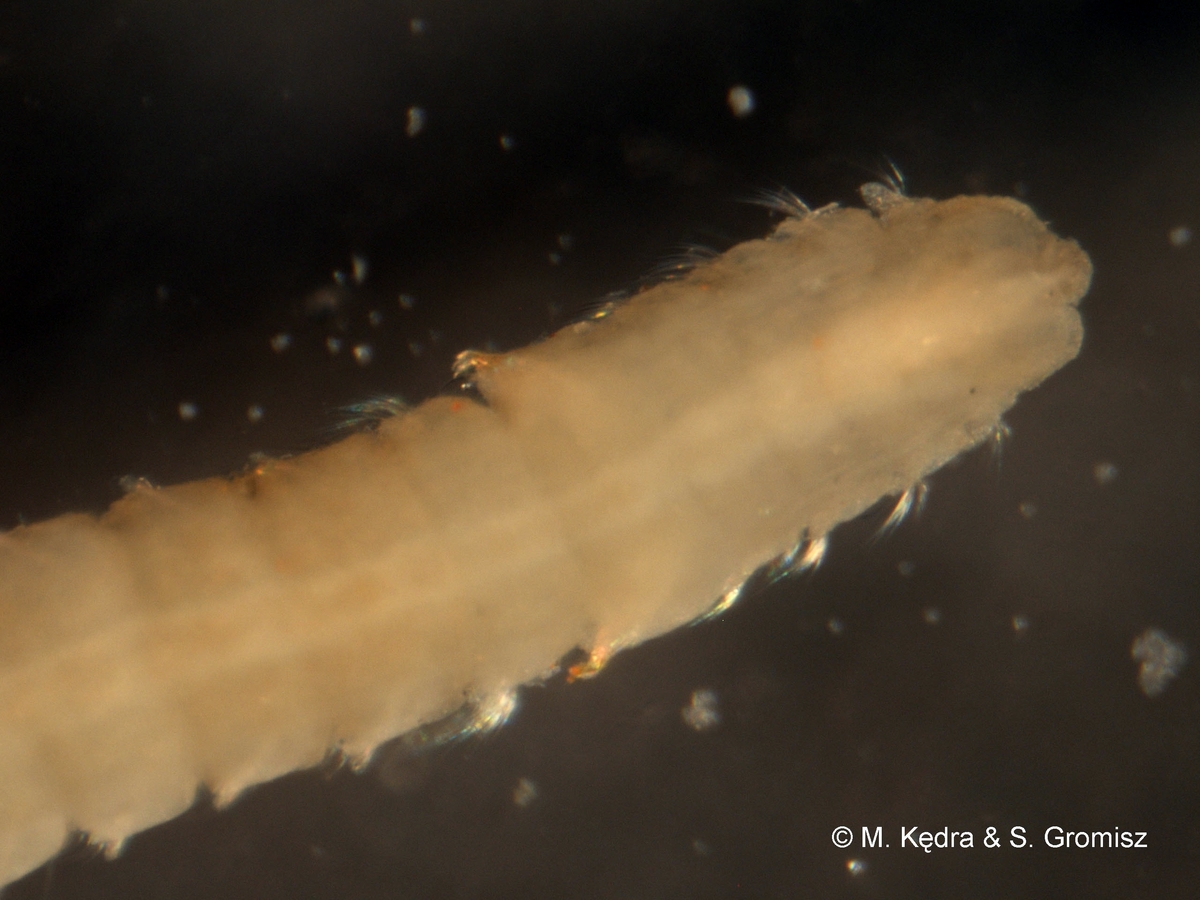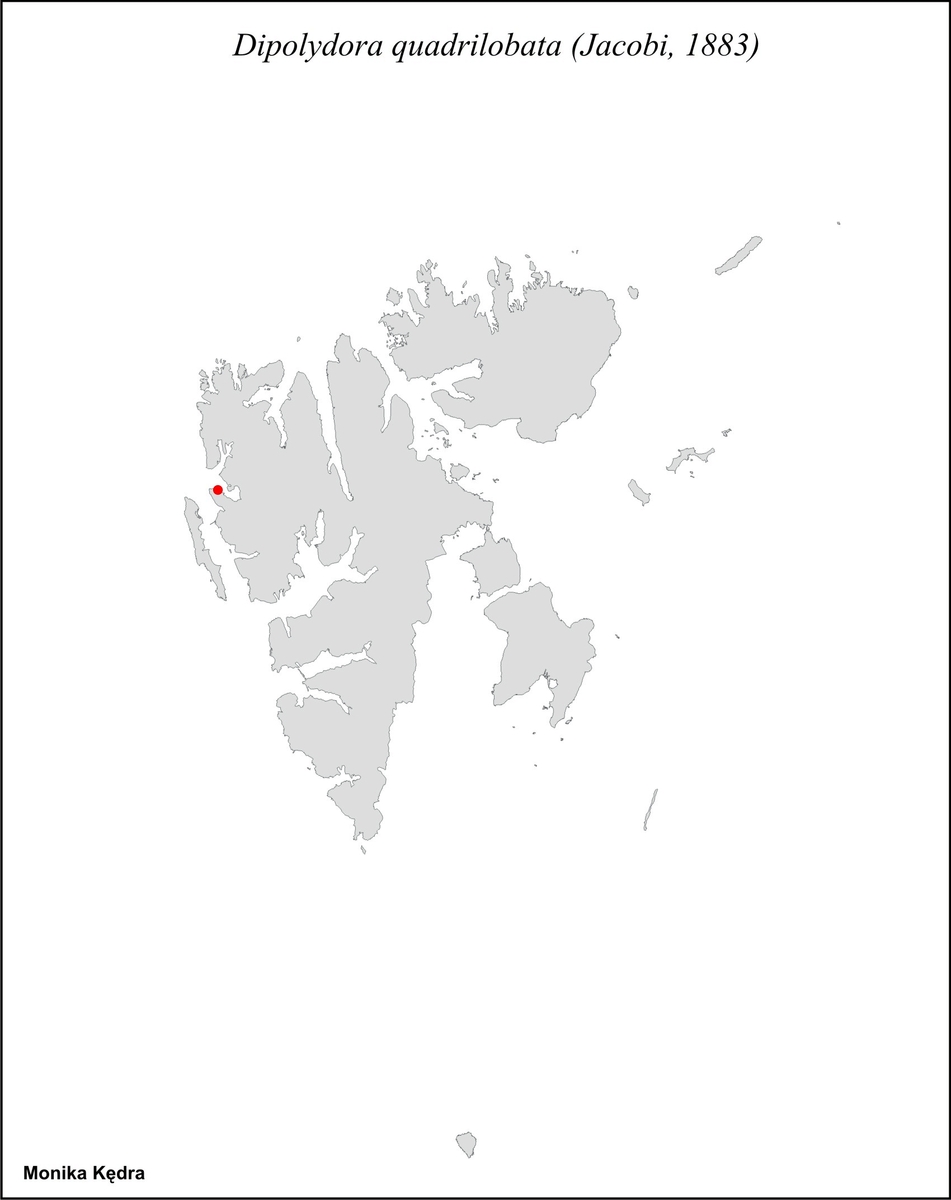Dipolydora quadrilobata (Jacobi, 1883)

|

|

|
Polydora quadrilobata Jacobi,1883
Distinguishing characteristics
First notopodium with chaetae.
Modified chaetae from 5th chaetiger thick, with a cleft tip and a brush-like tuft.
Branchiae start at segment 7 or 8.
Pygidium with 4 broadly rounded lobes.
Species description
Body relatively broad and flat anteriorly, cylindrical posteriorly. Prostomium more or less incised, without median antenna, with a caruncle reaching chaetiger 2-3. Two long palps present, with or without 4 or 6 eyes. Branchiae from chaetiger 7 or 8 to about chaetiger 35-55. First notopodium with chaetae. 5th chaetiger dorsally with a few capillary chaetae and 5-7 modified chaetae in a row. Modified chaetae thick , with a cleft tip and a brush-like tuft. 7th and following neuropodia with 3-5 bent hooded hooks. Posterior notopodia with needle-like chaetae that are as thick, but shorter than the capillaries. Pygidium with 4 broadly rounded lobes.
Size
Up to 25 mm for 90 segments.
Color
Living animal reddish brown, with brown pigment in anterior part.
Habitat
Occupies a tube of sand and mud-particles; embedded in mucus. In mud or sand, from lower eulittoral to 210 m.
Mobility
Discretely motile.
Feeding
Surface deposit feeder.
Filter feeder.
Life cycle
Brooding of encapsulated embryos inside the tube with release of planktotrophic larvae or inside the tube with direct development.
Distribution
Arctic, North Pacific, Nord Atlantic to Mediterranean, North Sea, Kattegat and Isefjord, Öresund.

